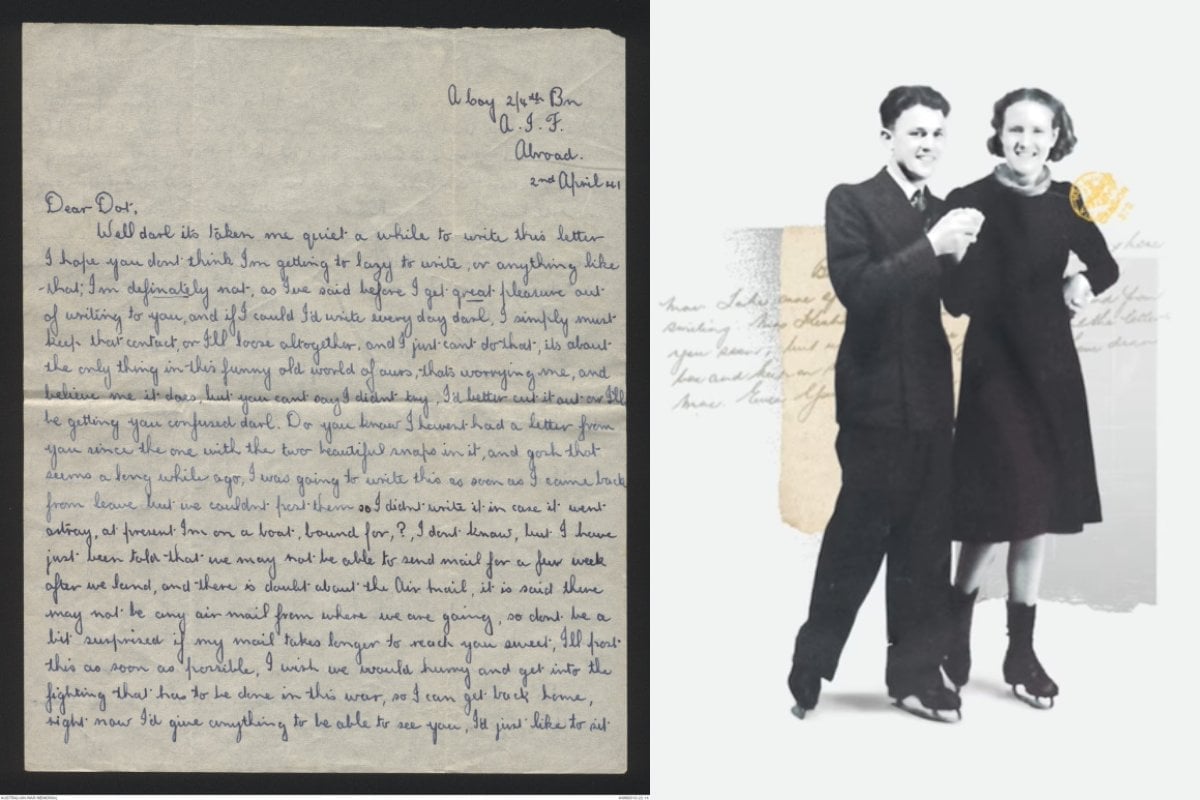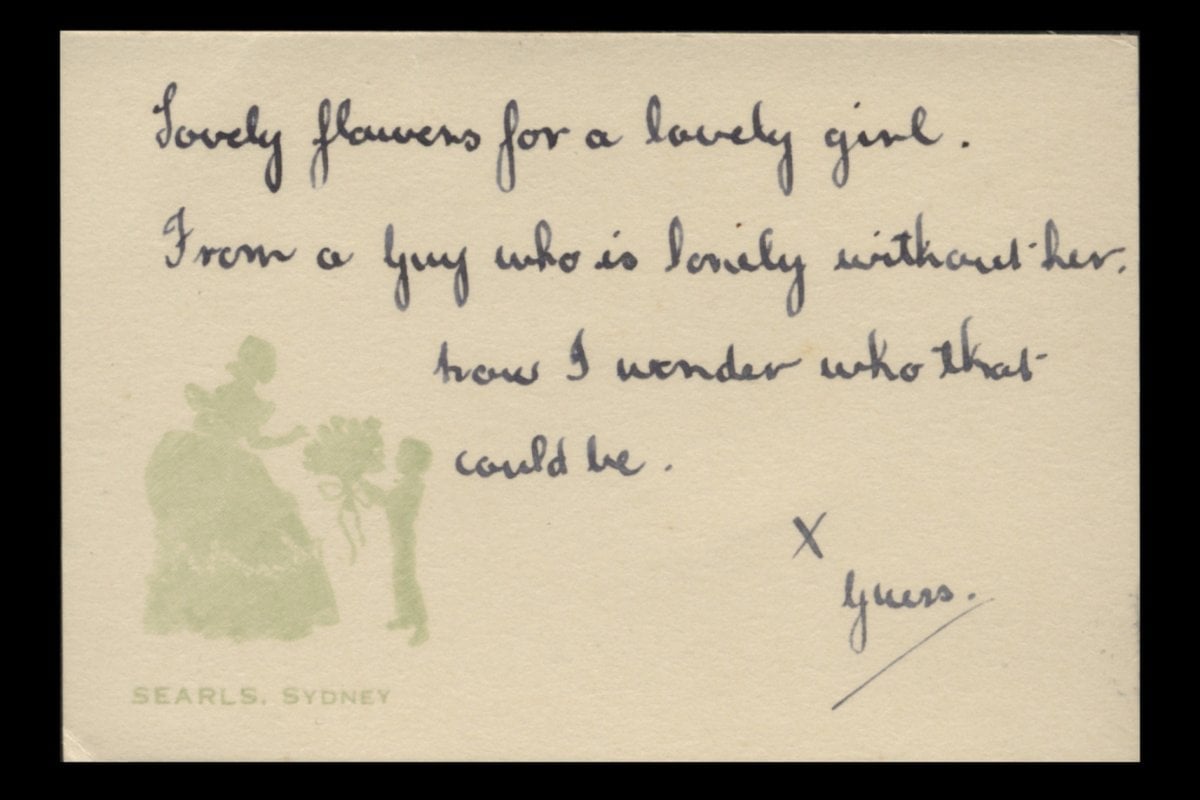
There's something deeply special about love letters.
They make us feel warm and fuzzy, whether it's reading a love note sent from our own partner, or coming across letters sent between random couples decades ago.
For the past few months I have been doing the latter — reading accounts of love, hope and yearning from World War II era ANZACs.
Watch: Monique Bowley's failsafe ANZAC biscuit recipe. Post continues below.
On Valentine's Day this year, The Australian War Memorial put a call out for volunteers to transcribe thousands of love letters contained in its National Collection as part of their digital platform Transcribe. So I decided to jump on board and volunteer. Thousands of these personal letters, diaries and other hand-written documents were then digitally released, many keen transcribers getting to work.
I didn't anticipate what a wholesome experience it would be — hearing real-life stories of love and connection. And considering the way of the world right now, these feelings are cherished.
"Reading these letters is like travelling through time. They were written in places like prisoner of war camps and front-line trenches," says Terri-Anne Simmonds, Head of Digital Experience at the Memorial.































































































